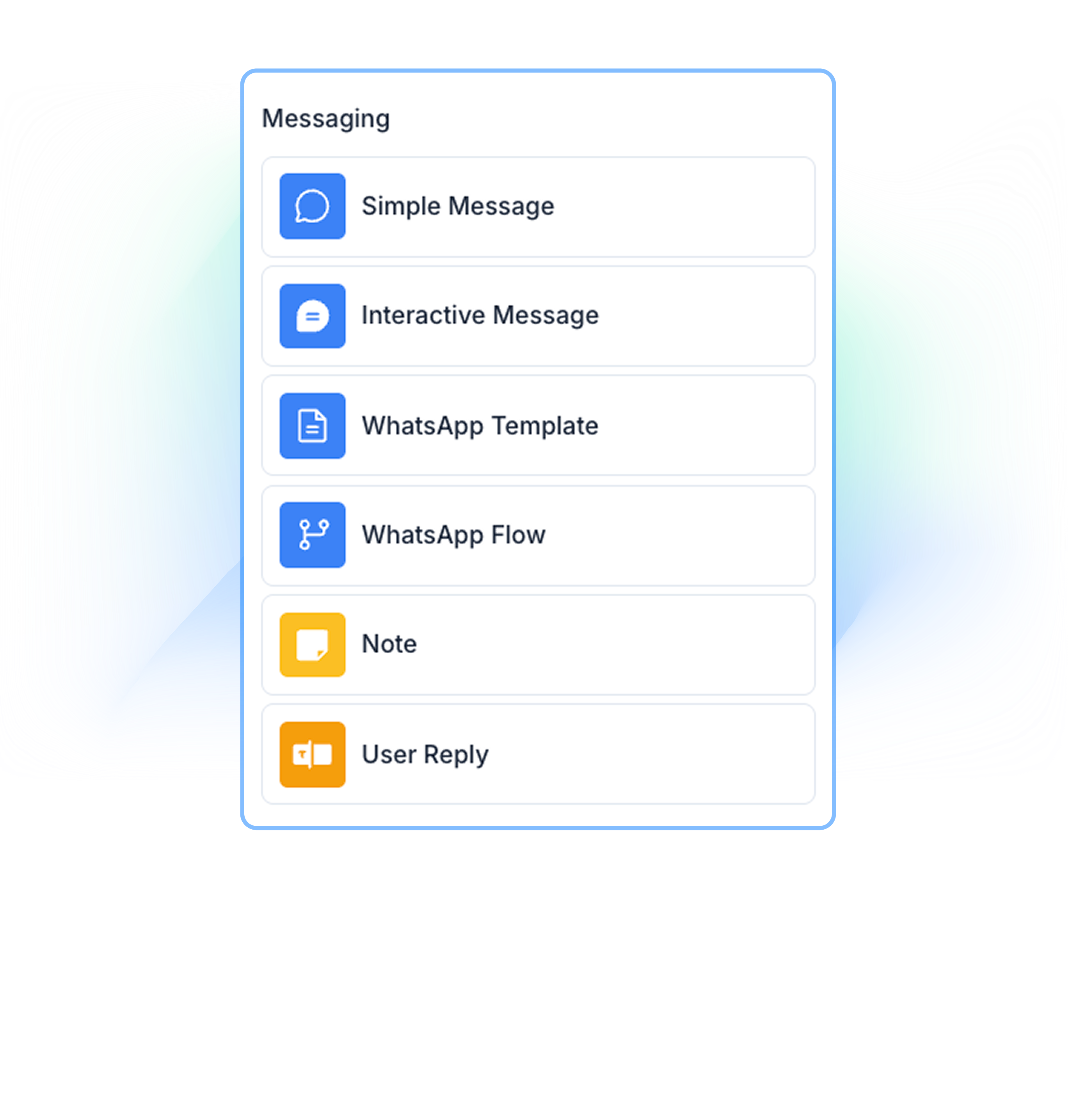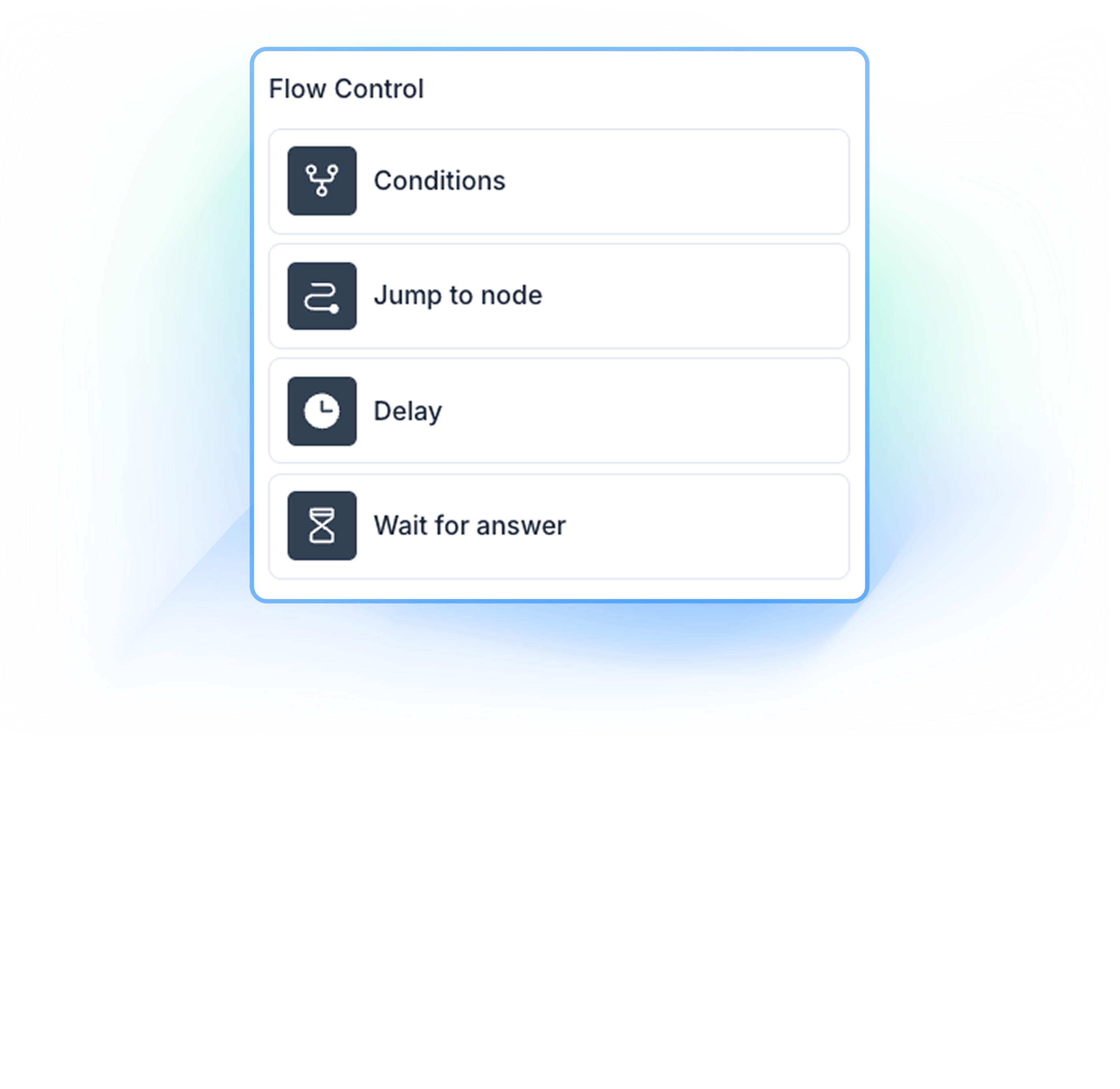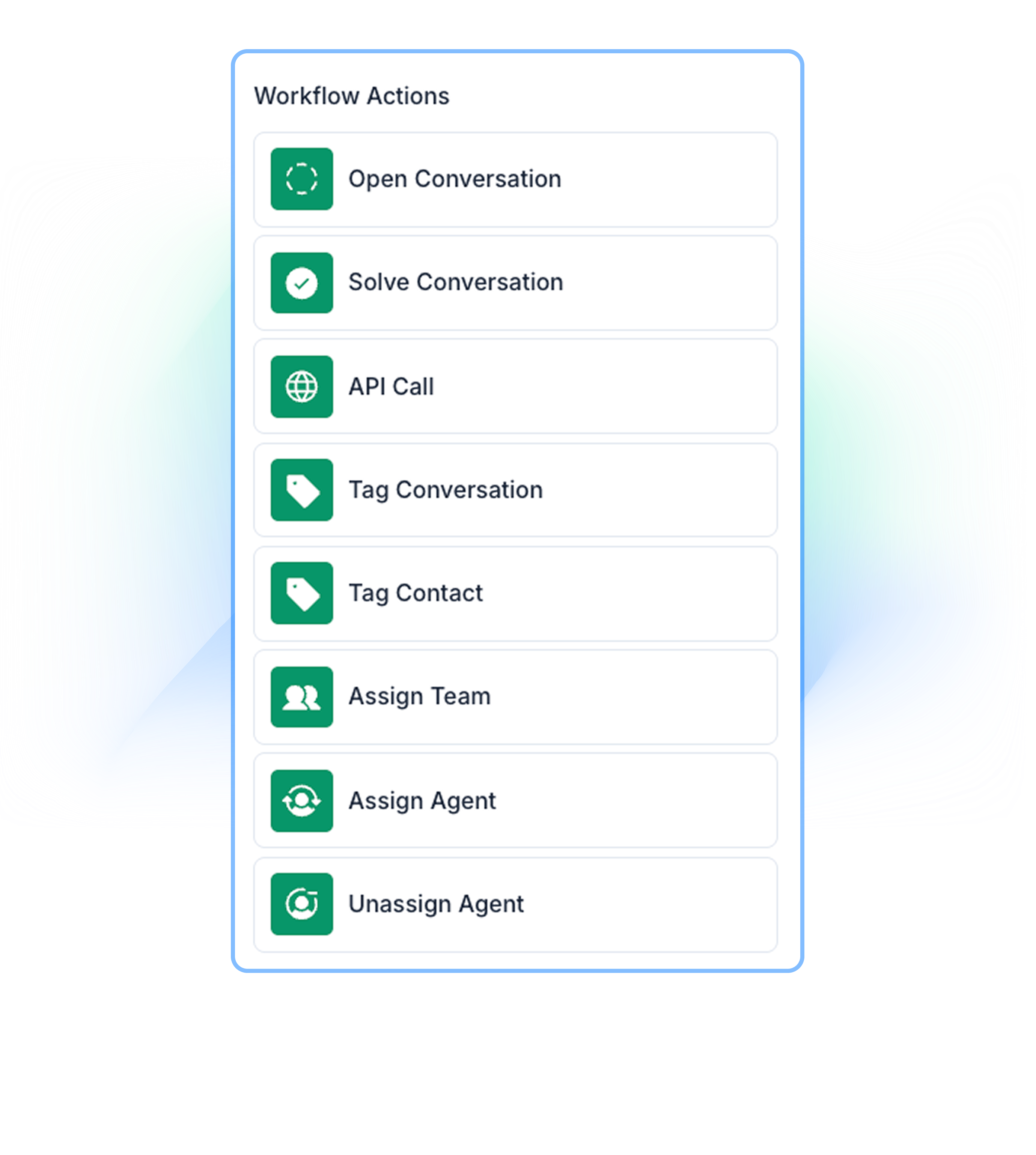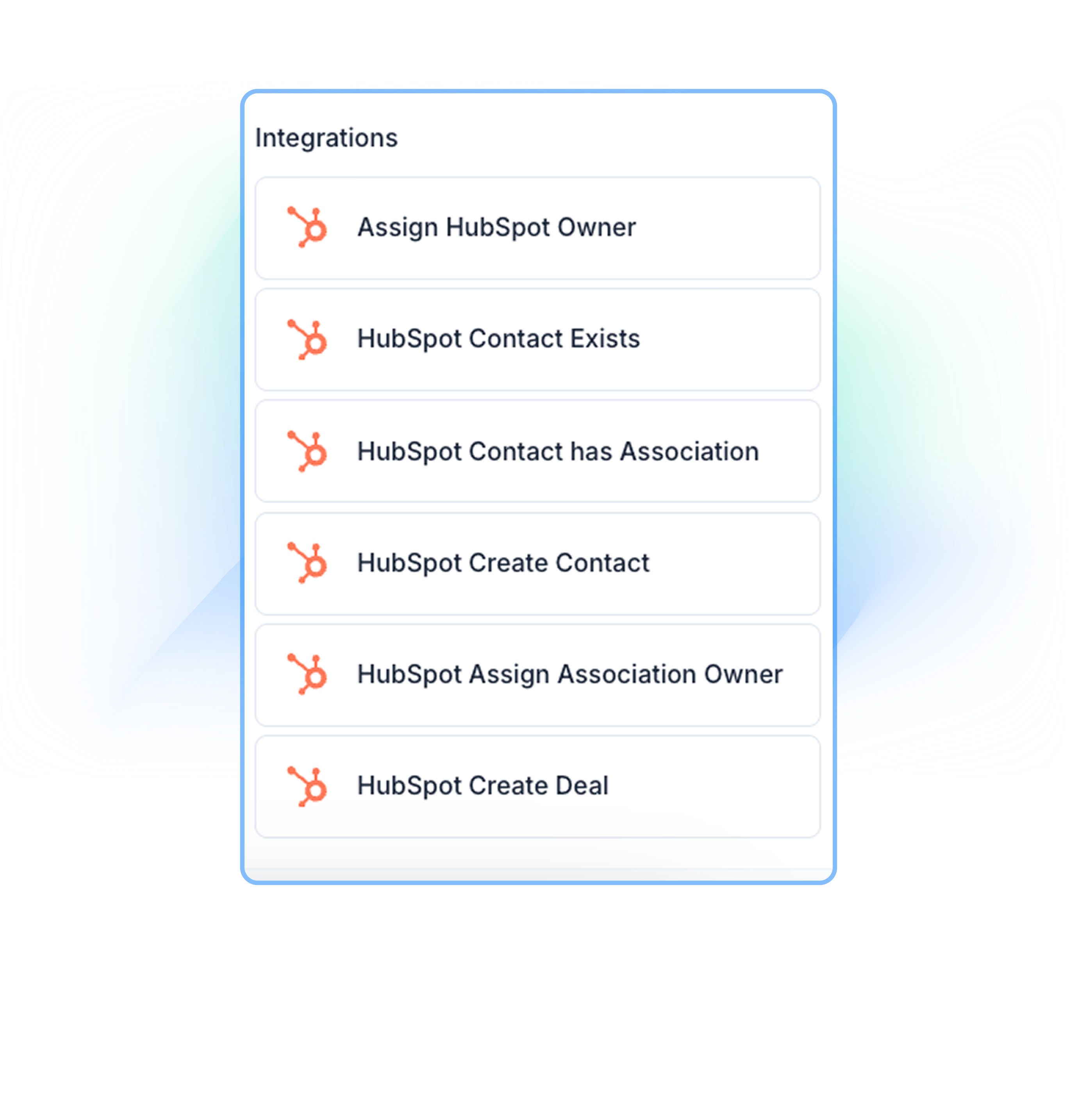Skip to main contentUse this guide to understand the different nodes and actions available when building chatbot flows in Rasayel. Learn how to send messages, control flow logic, integrate with external tools like HubSpot, and handle user responses or fallbacks effectively.
Messaging

- Simple Message: A standard text message that can include media.
- Interactive Message: A message with up to three buttons or a list of up to ten items.
- WhatsApp Template: A pre-approved message template.
- WhatsApp Flow: A form for customers to fill in for data collection.
- Note: Internal notes visible only to the team (e.g., “@Amr, this lead is qualified.”).
- User Reply: Captures customer responses and saves them to flow variables or properties.
Flow control

- Conditions - Define branching logic based on tags, properties, and flow variables.
- Jump to Node - Quickly redirect your chat flow to any node in the canvas.
- Delay - Adds a pause (between 5 seconds and 12 hours) before the next step.
- Wait for Answer - Holds the bot flow until the customer responds.
Workflow actions

- Open Conversation - Opens the conversation and ends the bot flow.
- Solve Conversation - Marks the conversation as resolved and ends the bot flow.
- API Call (HTTP Request) **- **Allows integration with external systems.
- Tag Contact or Conversation - Adds relevant labels for categorization.
- Assign to an Agent or Team - Routes the conversation accordingly.
Integrations
Automate actions and decisions using integrations actions with your CRMs
HubSpot actions

- Assign HubSpot Owner - Assigns the conversation to the contact’s associated HubSpot owner (company, deal, or ticket).
- The HubSpot owner must be a teammate in Rasayel with the same email they use in HubSpot.
- You can set a fallback user in case assignment fails or if no owner is assigned in HubSpot.
- Fallback: Decide what happens if the owner assignment isn’t successful for any reason.
- Check Contact Existence - Checks if the contact exists in HubSpot using their phone number.
- Fallback: Decide what happens if the contact is not found in HubSpot.
- Check Contact Association - Verifies if the contact has any linked associations (e.g., deals, companies).
- You can choose which type of association to check—company, deal, or ticket.
- Define how the flow should continue if there is only one associated object or multiple.
- Fallback: Decide what happens if no association is found or if the contact isn’t linked to any object.
- Create Contact - Creates a new contact in HubSpot for the customer.
- Fallback: Define how the flow continues if the contact creation fails.
- Tip: You can chain this with the ‘Note’ node to alert management and investigate what went wrong.
- Assign Association Owner - Assigns the conversation to the HubSpot owner of the associated object.
- Choose which type of association to check for ownership assignment—company, deal, or ticket.
- If multiple associated objects exist, you can assign ownership based on the oldest or newest one.
- Fallback: Decide what happens if the association’s owner is not found in Rasayel or if the contact isn’t linked to the association.
- Create Deal - Creates a new HubSpot deal for the contact.
- You can define the deal name using regular text, flow variables, or properties.
- Fallback: Decide what happens if the deal creation fails.
Ending a chatbot flow
A bot flow must end with one of the following workflow actions:
- Assign to an Agent
- Assign to a Team
- Close/Open the Conversation
Fallbacks
Control the flow of conversation when a fallback kicks in
Fallbacks handle cases where:
- A customer interacts outside the predefined flow.
- A customer clicks buttons from previous messages.
- A customer doesn’t respond within a specified time (15 minutes - 24 hours).
Fallback actions could include:
- Redirecting the conversation to an agent or team.
- Opening or closing the conversation.
- Adding contact or conversation tags.
- Making an API call to an external system.
Fallback types
 Global fallback (trigger node):
Global fallback (trigger node):
- Default Fallback: Applies to the entire chatbot flow.
- Activates only if no node-level fallback is defined.
- Ensures there’s always a fallback mechanism, even if individual nodes don’t have custom fallbacks.
Node-Level fallback (regular node):
- Higher Priority: These fallbacks apply to specific nodes within the chatbot flow.
- They trigger when the user interaction deviates at that particular node.
- If a node-level fallback is set, it overrides the trigger-level fallback.




 Global fallback (trigger node):
Global fallback (trigger node):

